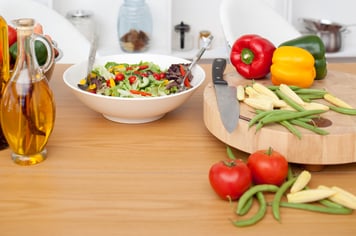Do you always read food labels? When you do, how many parts of it do you understand? Between the grams and milligrams, calories and percentages, it can get pretty overwhelming pretty fast. Our nutrition experts at First Stop Health created this helpful guide on how to go through this block of information.
A few helpful takeaways:
-
Take your time when reading food labels.
-
Use measuring cups the first few times to make sure you’re following the portion sizes listed on food labels.
-
Remember the “5/20 rule” for a quick number assessment. The 50/20 rule is an easy way to determine nutritional value. If the % Daily Value is less than 5%, then the item has a low amount of that specific nutrient. If the % Daily Value 20% or higher, then the item has a high amount of that specific nutrient.
Sometimes spending a week reading food labels for just the sodium or sugar content can slowly build confidence. Soon you’ll be teaching your friends and family yourself!
Looking for more nutrition tips? Try this blog on mindful eating.
.png?width=1650&height=1275&name=website%20images%20(30).png)
Table of contents



